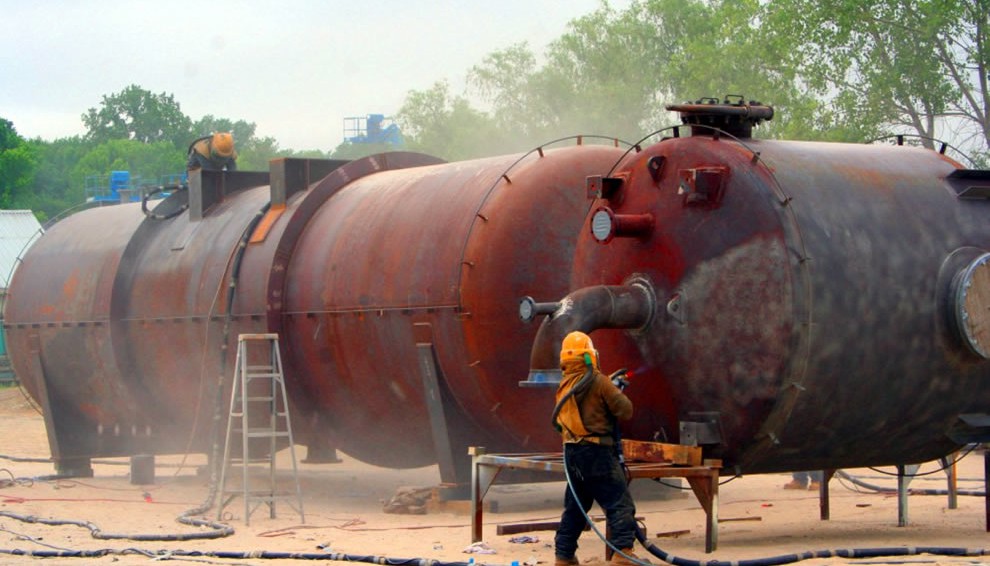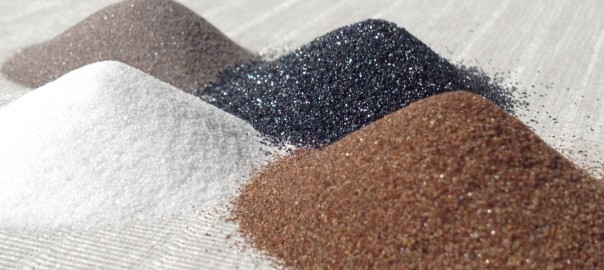Soda Blasting involves one of the softer abrasive blasting materials, rating an average 2.4 on the Mohs Scale of mineral hardness (1-10). Most abrasive blasting cabinets aim to maximize abrasive recycles and minimizing dust collector service, and for this reason most sandblasting uses harder abrasives like plastic and glass beads. Soda blasting is the exception, a one-time-use abrasive, used for special applications when recycling abrasive is not important.
Soda Blasting: The Good
The main advantage of soda blasting is it’s a cost-efficient, single-use abrasive. Although recycling abrasive is the name of the game for most abrasive blasting applications, there are a few special applications not needing to recycle abrasive. Onetime use abrasives are used for applications like ship cleaning that require huge amounts of abrasive – it typically takes one million pounds of abrasive for an average ship – or maybe a smaller amount for the back bed of an old truck. Additionally, soda is the primary abrasive to clean oily parts because once it removes the oil; the abrasive doesn’t cycle back through to hit the part again. Soda is also water soluble making sure no abrasive remains in critical bearing areas!
Six Rules for Soda Blasting Success
- Always use a direct pressure abrasive delivery system that uses lower blasting pressure to maximize abrasive velocity without reaching maximum soda impact velocity
- Never blast using more than 30 to 35 psi pressure when using direct pressure delivery
- Always use a ghost flow out the nozzle to prevent Soda flooding and or slower cleaning
- Use equipment designs that understand the proper use of soda and collection of spent soda
- Know that soda used at higher pressure will surface etch and change part metallurgy.
- Exceeding maximum impact velocity will simply create a failed soda blasting cabinet with a failed dust collector.
Soda Blasting: The Bad
Because soda is now so popular, manufacturers and retailers are offering subpar quality soda blast cabinet to make a quick buck. They do not know the nuances of soda as an abrasive nor do they understand its limitations.
Yes, soda has important characteristics, but it’s not a magic bullet. Soda cannot be recycled the way other abrasives like steel shot, steel grit, silicon carbide, aluminum oxide, garnet, and ceramic, glass or plastic beads. Being that soda is so soft, it explodes into tiny fragments upon impact with the object being blasted. Additionally, soda abrasive doesn’t work harden the part being cleaned because it’s meant to be used a low abrasive velocity.
Soda Blasting: The Ugly
Today, because of the need for a soluble abrasive like soda, you see everyone selling soda blasting cabinets. Unless you have very few parts to blast or blast only a few times a month for minutes all these blasting cabinet that are supposed to contain the soda will soon be the biggest mess you could possibly imagine all with failed dust collectors.
The problem is that some retailers sell cheap slag and soda to blast cabinet operators. Often, the operator thinks the soda can be recycled and runs the machine in excess of 60 psi in a siphon delivery system or 30-35 psi in a direct pressure delivery system. This causes the abrasive to explode on impact, severely reducing visibility and simultaneously creating tiny particles that are sucked into the dust collector – leaving the cabinet kaput.
Pro Tip: If the dust collector gets packed with soda abrasive, the blasting cabinet fails, it’s that simple.
Media Blast offers three duty cycle soda cabinet models: the Blizzard Soda Blast Cabinet, the N-200 Soda and the Pro Soda. Each is matched to a specific usage – recreational to industrial. Each model provides users an environmentally friendly clean part with its original finish in tact, free from trace oil residue. If you think soda blasting is right for your application, Media Blast can supply you with a soda blast cabinet with superior visibility that keeps soda out of the dust collector to ensure your needs are met with minimal machine maintenance.



